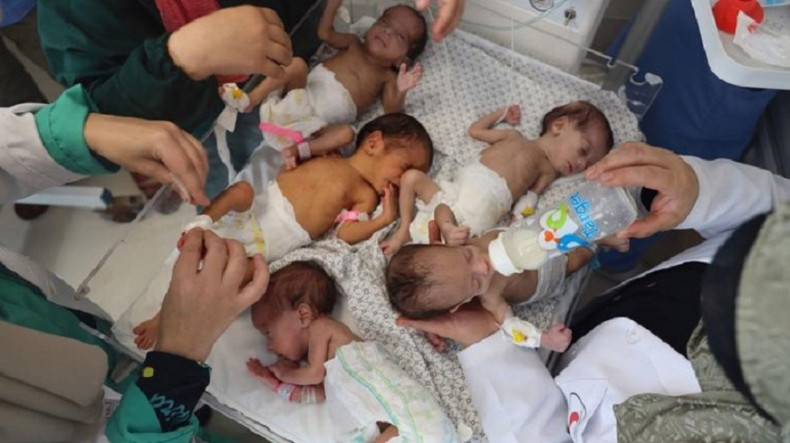
Gaza children's lives threatened by rising malnutrition, UNICEF warns
A steep rise in malnutrition among children and pregnant and breastfeeding women in the Gaza strip poses grave threats to their health, according to a comprehensive new analysis released by the Global Nutrition Cluster.
As the ongoing conflict in the Gaza Strip enters its 20th week, food and safe water have become incredibly scarce and diseases are rife, compromising women and children’s nutrition and immunity and resulting in a surge of acute malnutrition, UNICEF said.
The report – Nutrition Vulnerability and Situation Analysis- Gaza – finds that the situation is particularly extreme in the Northern Gaza Strip, which has been almost completely cut off from aid for weeks. Nutrition screenings conducted at shelters and health centres in the north found that 15.6 per cent - or 1 in 6 children under 2 years of age - are acutely malnourished. Of these, almost 3 per cent suffer from severe wasting, the most life-threatening form of malnutrition, which puts young children at highest risk of medical complications and death unless they receive urgent treatment. As the data were collected in January, the situation is likely to be even graver today.
Similar screenings in the Southern Gaza Strip, in Rafah, where aid has been more available, found 5 per cent of children under 2 years are acutely malnourished. This is clear evidence that access to humanitarian aid is needed and can help prevent the worst outcomes. It also reinforces agencies’ calls to protect Rafah from the threat of intensified military operations.
“The Gaza Strip is poised to witness an explosion in preventable child deaths which would compound the already unbearable level of child deaths in Gaza,” said UNICEF Deputy Executive Director for Humanitarian Action and Supply Operations, Ted Chaiban. “We’ve been warning for weeks that the Gaza Strip is on the brink of a nutrition crisis. If the conflict doesn’t end now, children’s nutrition will continue to plummet, leading to preventable deaths or health issues which will affect the children of Gaza for the rest of their lives and have potential intergenerational consequences.”
Before the recent months’ hostilities, wasting in the Gaza Strip was rare with just 0.8 per cent of children under 5 years of age acutely malnourished. The rate of 15.6 percent of wasting among children under 2 in Northern Gaza suggests a serious and rapid decline. Such a decline in a population’s nutritional status in three months is unprecedented globally.
There is a high risk that malnutrition will continue to rise across the Gaza Strip due to the alarming lack of food, water and health and nutrition services.
Newsfeed
Videos






























